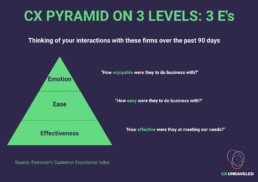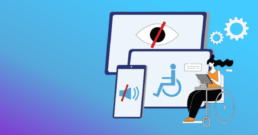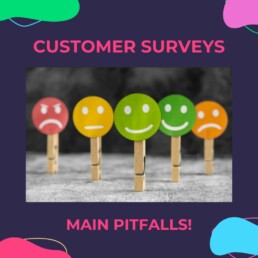Suitsupply's Three E's: Effectiveness, Ease, and Enjoyment in CX
Last week Peter had to buy a suit for a wedding on Thursday. And I am not sure about you, but Peter could definitely think of nicer things to do during his weekend!
But his visit to Suitsupply turned out to be a great experience that is worth sharing! What made it so great: let us explain this with the help of the Customer Need Pyramid. This model is being used by Forrester and it works with the 3E’s: Effectiveness, Ease, Emotion!
EFFECTIVE:
Peter was ‘on a mission’ to get his suit. His job to be done was to meet the strict dresscode and to look great for the wedding. And he succeeded! With fairly priced suits and the many choices that Suitsupply offers, he was not really in doubt about this one actually!
EASY:
What made it good was that the experience was completely effortless! Your name is registered the moment you walk in and a few minutes later a sales person comes to pick you up in the comfortable coffee corner. This person is your personal assistant that gives you full attention and won’t help any other customers till you have left the shop. You just have to give a short description what you are looking for and they will do all the work!
ENJOYABLE:
This is the best part: the one that makes you want to come back and share your experience with others. While waiting for help Peter could relax in the coffee area enjoying a nice cappuccino. The sales rep Lola (originally from Spain) was super friendly, gave good advice on shoes and shirts for the wedding (without pushing for additional sales). And while trying out various suits and talking about skiing, she gave some advice on a cool skiing area in Spain. And what really was a WOW-moment: as he needed to have his suit adjusted, Peter could pick it up on Wednesday. OK that’s a bit less effortless, but Lola told Peter that this was her day off and she would be happy to come to the shop to personally hand over the suit and check if it would completely fit Peter’s expectations in the end!
EFFECTIVE is what you come for
EASE is what makes you satisfied
ENJOYABLE is what makes you remember and share it
How is your company performing on the Customer Need Pyramid?

Inclusive CX: Bridging the Gap through Accessibility
Did you know that 15% of the world population has some form of disability? And did you know that 1 out of 12 males and 1 out of 200 females are probably unable to distinguish the red and green dots in this posts visual?
Some form of disability includes: motor impairment, low literacy, slight mental handicap, dyslexia, color blindness, visual and auditive impairment
Have you ever stepped in the shoes of these customers? Do you specifically design your products and services for these customers?
Accessible design is focused on ensuring that interfaces and technology can be used by people with disabilities. We recently hosted a @womenincx event on this topic and if the participants were representative for most companies, then you've either just embarked on desigining for accessibility or have a desire to do so. Which is good news!
But where to start?
There are tons of great resources on the internet, but there are also some great books out there worth reading:
* Accessibility for Everyone by @Laura Kalbag
* A Web for Everyone by @Sarah Horton and @Whitney Quesenbery
* Designing Across Senses by @Christine Park and John Alderman
Let us know which other resources you know which are worthwhile to share with anyone looking to move forward on designing for accessibility!
Must reads to supercharge your CX knowledge
Summer's in full swing, and you know what that means – it's time to level up your customer experience game! Whether you're chilling on the beach or sipping a cool drink by the pool, here are the 5 must-reads to supercharge your CX knowledge this season! 📚🏖️
* Why Your Customer Experience Program Will Fail by Friederike Niehoff and Aleksandra Pilniak. 93% of all CX programs fail. Read this book to understand what you need to do to make it to the 7% that is successful.
* The Digital-First Customer Experience by Joe Wheeler. Digital-first is an important trend in CX and based on real-life cases, this books helps you design the right digital-first experience.
* Built to Win by Annette Franz, CCXP. Looking to read up on Customer-Centric Culture? Look no further! How to transform your existing company culture and rebuild it around the needs of your customers.
* Never Lose an Employee Again by Joey Coleman. This list would not be complete without a book on Employee Experience (EX). Including practical strategies that will teach you exactly how to recruit top talent, bring them on board successfully and keep them engaged.
* And in the Design category: This is a Prototype by Scott Witthoft and Stanford University Institute of Design / d.school. Definitely read this if you want to become better at prototyping.
Happy reading! 📚
7 things we can learn from Coldplay!
Even when expectations (and prices) are sky high ...
Coldplay still keeps amazing and delivering an unrivalled experience in so many ways that other artists (and companies) can only dream of!
OK, there is this amazing show, 2 hours of songs you can sing and dance along with, perfect live performance and a visual experience you don't see anywhere else!
But what else stood out:
7 things we can learn from Coldplay!
1. Being authentic
Chris Martin is Chris Martin. What you see is what you get. You feel he genuinely cares. Everything he does is real, from having fun on stage to improvising and talking to his fans and showing his appreciation for his other band members.
2. Staying positive
Not only with catchy songs and confetti and fireworks but also when it starts raining at the beginning of the concert. He just keeps smiling and starts singing:
I have been in Paris, I have been in Spain
but nothing beats Amsterdam in the rain!
3. Making a personal 1-1 connection
When inviting a girl on stage who asks him to sing the song FLY ON for her brother in heaven. Clearly improvising, making apologies to her and her brother for making some keyboard mistakes, and asking her to sing along with him while looking up together to heaven
4. As well as connecting to all 60.000 people
By asking visitors to put away their cameras for a moment, pointing out that this is a very special moment: we will never be together with these 60.004 people. And we take the next 3 minutes to enjoy it together to the max! And what a difference it makes: 60.000 fans (from 5 to 75 years old) jump to the tunes of A sky full of stars! and experience the moment!
5. Valuing customers for their business
Thanking fans various times throughout the evening for coming to the show, for travelling and taking all the effort to see the concert. And giving attention to ALL visitors, not only to those in the front, but playing a part of the concert on the other side of the stadium so people in the back get the best seats for a part of the concert.
6. Contributing to a better planet
Before starting the show, pointing out all their efforts and achievements in the area of sustainability (and there are too many to mention); walking around with a rainbow flag and supporting the LGBT community; and asking everyone to keep spreading love
7. In the end ... Making it memorable
It is Friday; the concert was on Tuesday and the experience is still in my memory and here to stay.
OK, we are not Coldplay, but if we take at least one of the above points with us, we are sure this will lead to delivering better experiences for all of us!
Customer Surveys - Main Pitfalls
A good customer understanding can be seen as the cornerstone of customer experience. Customer surveys are by far the most used tool to get customer feedback. And while these surveys hold immense potential for understanding customer preferences and improving products or services, they are not without their pitfalls. Here we share some pitfalls every business should be aware of before sending out a customer survey:
1. Survey Fatigue
There are too many surveys with too many questions. An access of surveys can lead to low response rates and rushed and inaccurate responses.
2. Surveys dissatisfy customers
Surveys are often the last touchpoint in the customer journey. If you ask irrelevant questions, it might annoy your customers, leaving a negative last impression of your brand.
3. The wrong customers answers
If surveys are only sent to or being answered by a specific group of customers, the data collected may not be representative of the entire customer base. This can lead to skewed insights and misguided decisions.
4. The wrong questions are asked
Leading, irrelevant or misunderstood questions, lack of context, limited response options; making a good questionnaire is a profession! Asking the wrong questions can lead to unactionable date, the wrong insights and decisions.
5. No follow up is given
Although almost all companies collect some form of customer feedback, just a small percentage structurally puts it into action and closes all feedback loops! Some surveys are just marketing campaigns in disguise and only have the objective to show the outside world how good the company is doing.
6. Gaming and manipulation
If employee rewards depend on customer survey scores, you will have the risk that surveys will only be shared with happy customers or customers will even be asked to rate a 9 or 10. The metric itself becomes the target, not the improvement of customer insight or the customer experience.




